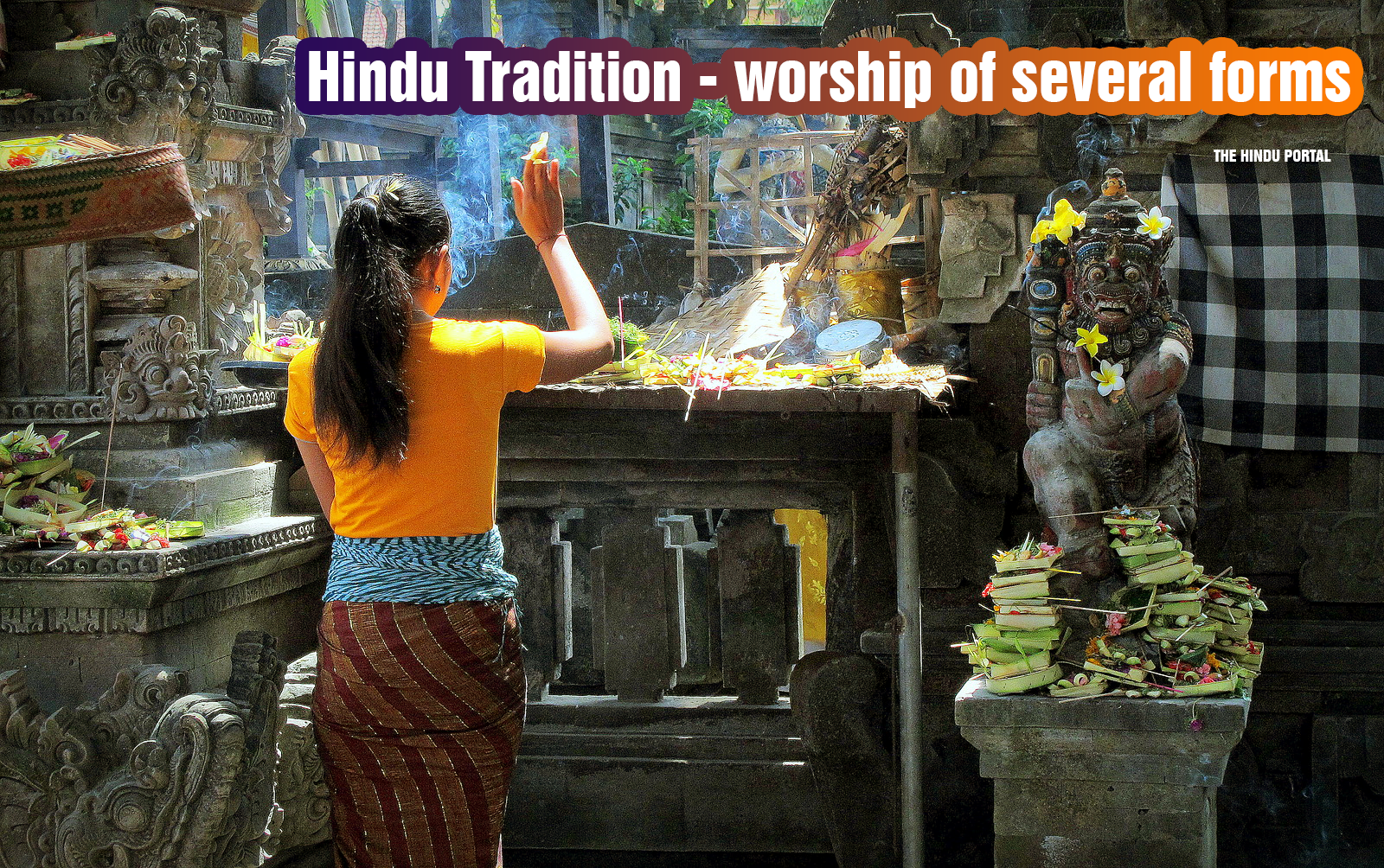 |
| Girl Offering to Hindu gods in a Balinese temple |
Hindu Tradition Accepts worship of several forms of the One Supreme God
In the Hindu tradition of worship of several forms of Avathãras of the Supreme, various practices exist in different parts of Bhãrat. The varying forms and Icons used in various forms of worship in popular Practice are needed for understanding. In Bengal it is Sri Kaali or Sri Durga, in the Ganges valley it is Sri Siva and Sri Rãma, in Mathura and in Gujarat it is Sri Krishna, in Maharãshtra and Karnataka it is Sri Ganesha and in Andhra, it is Sri Venkatéswara. In Tamilnadu and Kerala, the worship of Sri Muruga, Sri Krishna, and Sri Ayyappa or Dharma Sãstha is very popular.Similarly, in Vedic fire rituals, when we invite the Celestial forces like Surya, Saneeswara, Indra, and Varuna and offer prayers to fire, they all have their special place in the Divine hierarchy that governs our lives. Often we see the effects of these prayers right there through the rituals. Temples for many of these Deities are established through the special experience of a Divine command. Vedas and Ãgamas, as a powerful and most reliable science, explain the phenomena by which it is determined which place is right for which type of Temple.
Worship of these Deities dominates in the popular practice over all other forms of Deities, though every form is followed in every part of the land, each family can follow anyone form as their Ishta-devatha. One of the very basic understandings in the following of Hindu tradition is the concepts of Ishtadevatha and the Adhikãra puja.
Here each member and each family accepts one form as their choice for their family worship and learns to perform traditional worship to reach that form by prayers and rituals. We cannot say that they are all one and the same though one may be able to comprehend the relation and the unity of the ultimate Supreme Truth behind all these manifestations at different levels.
The Immanent Supreme creates all these transcendental forms through the Yoga-Maya for the devotees. The Supreme appears in these forms without ceasing to be His True Self. The great Hindu Saint Sri Ãdi Sankara while establishing the theory of Advaita or Monism with the path of Jñãna Yoga also explained the practice of prayer rituals for six forms of Divine manifestations, Ganesha, Siva, Vishnu, Sakthi, Kumara and Surya as Deities or Ishta-devata, This shows that the two aspects of the Supreme are complementary and not contradictory.
The various forms of Deities are derived from various scriptures and mythology. The idea that every Deity whom men worship is the embodiment of a limited ideal serving a specific purpose, and that the Deity is a symbol of some aspects of the Absolute Supreme Paramãtma is the most fundamental characteristics of Hindu religion. The bewildering diversity of Hindu belief rests on a solid unity. It is this idea that makes Hindu religion the most tolerant of all religions and averse to proselytizing through religious propaganda. Here everyone understands that all of them ultimately will be praying to the one and Same Supreme.
By: Dr. Bala N. Aiyer, M.D.
To financially support THE HINDU PORTAL visit the link below -https://www.thehinduportal.com/donate
{full_page}











